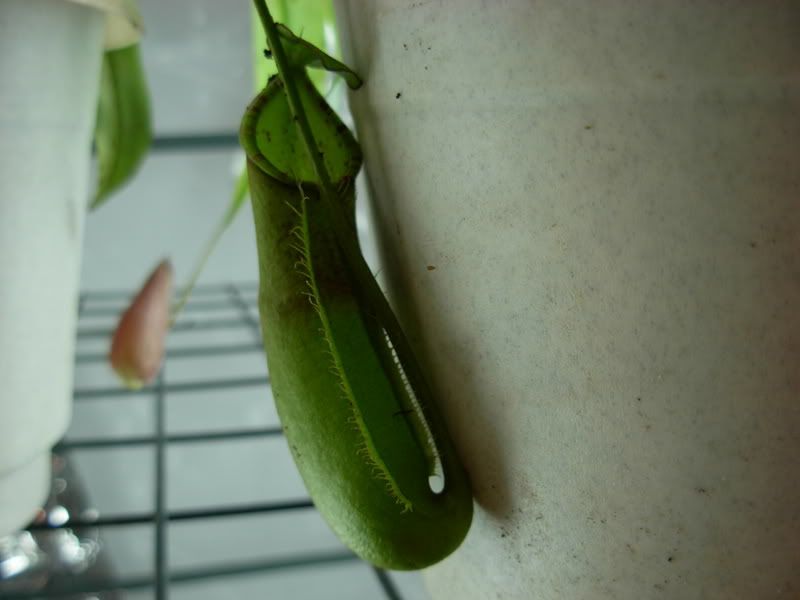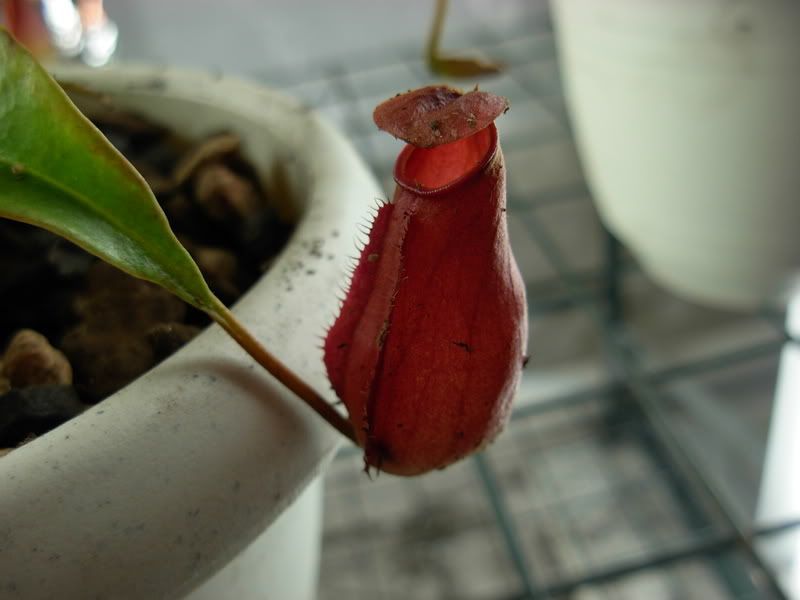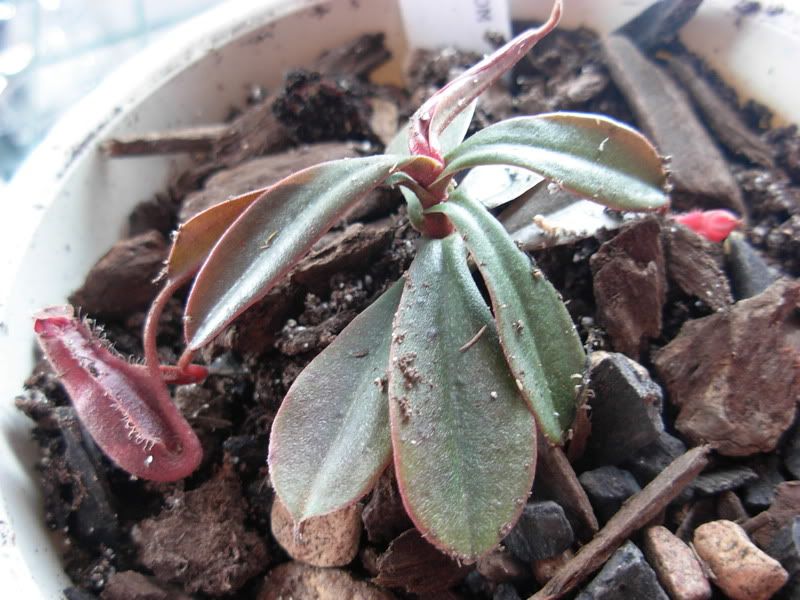|
|
Post by phissionkorps on Feb 2, 2008 17:21:57 GMT 8
Just got this stuff in from CP Jungle. Everything arrived great, even though this is the 2nd package I've gotten this week that the mailman decided would look better crushed. Macrovulgaris  Madagascariensis  Mirabilis echinostoma  Distillatoria pink  This plant is pretty big and has about 4 basals forming. Vieillardi. To be honest I'm not entirely sure what to do with this one. In all the habitat photos I've found, it looks like the soil is dry. I have this potted in western fir bark, charcoal, clay pellets, and a touch of peat about the root area. Hopefully this works...  That's all for now. |
|
|
|
Post by Robert on Feb 2, 2008 21:27:18 GMT 8
Wow nice new addition (addiction ! ). The Mirabilis echinostoma already showing the awesome peristome  |
|
|
|
Post by rainforestguy on Feb 3, 2008 5:50:58 GMT 8
PK,
Please keep us abreast with the development of your tc clones. I have grown many N. madagascariensis, vieillardii and tc echinostomas with minimal success. I'm not throwing in the towel at you, but believe these clones require specific climates to grow (period)!
Like seeing a tc clone of hamata or the perfectly grown N. rajah, these plants conform to surviving and becoming established ONLY in a narrow parameter. This is the reason why you don't see much successful established species of tc origin around. Madagascariensis, vieillardii, mir. echinostoma, etc. have been around for years, yet so few "big" plants are seen. Perhaps in your growing conditions you can achieve this.
M
|
|
|
|
Post by phissionkorps on Feb 3, 2008 5:56:11 GMT 8
I'll see what I can do. I actually did well with my first madagascariensis, but one of my caretakers killed it when I went out of town. Once you get watering right, as long as you keep it warm it isn't that hard. I'm trying a new soil mix though. Peat based mixes are too wet, adn sphag breaks down too much when allowed to totally dry out and then get wet again like the plant seems to like. This time its in the same mix as the vieillardi.
|
|
|
|
Post by rainforestguy on Feb 3, 2008 6:06:56 GMT 8
Without sounding too anti tc as I do, the vieillardii is showing the stemming effect of a tc plant that has been affected by the over use of cytokinins. This is one of the effects of chemical pounding on a tiny tc stem division. What happens is that the stem grows and the rest of the plant is still in seedling mode, eventually the plant burns itself out as one part of it becomes a matured plant while the rest are in juvenile mode >This is seen often with many orchids like dendrobiums, cattleyas and vandas where the stems grows faster than what the plant can actually produce.
M
|
|
|
|
Post by nepenthesfreak on Feb 3, 2008 7:21:54 GMT 8
"What happens is that the stem grows and the rest of the plant is still in seedling mode"
been there...
|
|
|
|
Post by phissionkorps on Feb 3, 2008 7:57:31 GMT 8
Hmm. Auxins are what promotes stem elongation. I have given some plants heavy doses of GA3, which has resulted in stem elongation, and formation of very long, narrow leaves. When I dosed some of my seedlings with a rather high concentration of a cytokinin, nothing visibly occurred. Though cytokinins are supposed to encourage cell division, I wasn't using them for that purpose nor have they made my plants grow any faster. However, the same concentration given to an adult plant caused heavy leaf senescence and eventual death of the plant....which is expected. If the stem is becoming longer due to any hormone, it would be due to an auxin. In my experience, after dosing multiple plants with a VERY high concentration of GA3 (higher than would ever be used in TC), my plants exhibited morphological changes for about 1 year, but have eventually returned to the way they should be, oddly with seemingly more vigor than before.
|
|